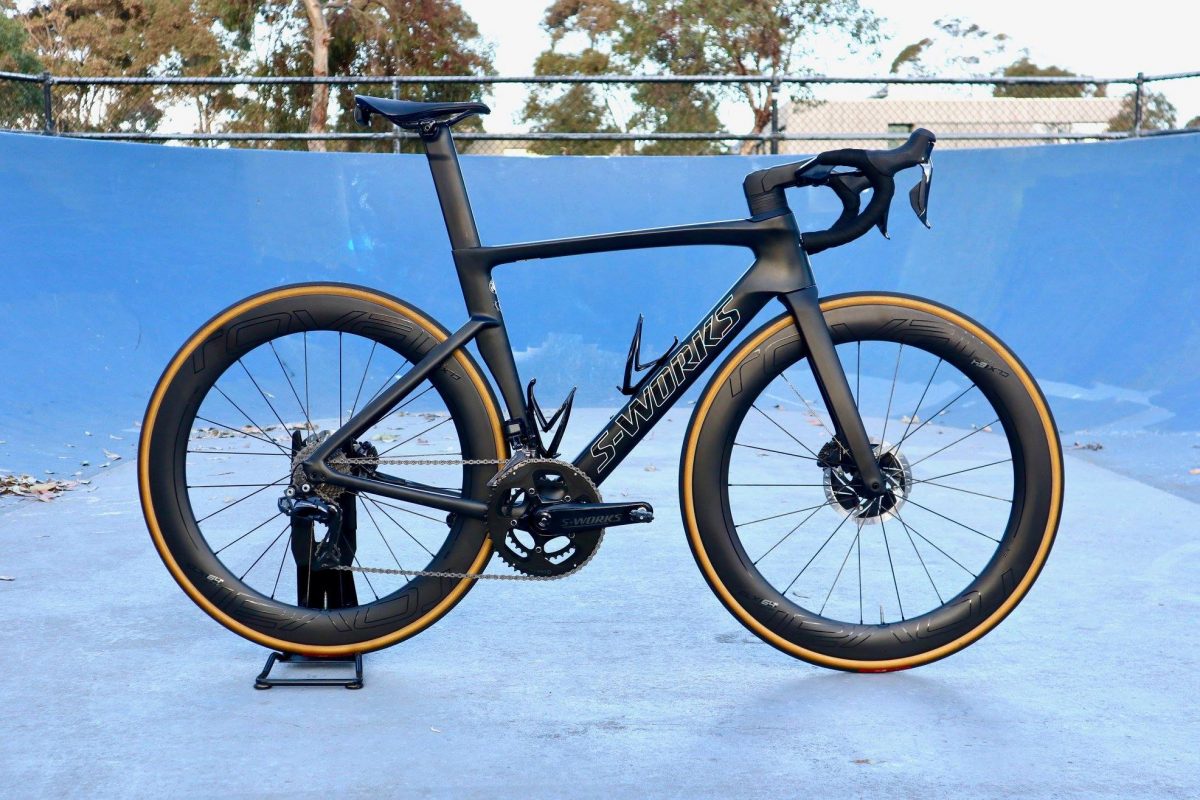
In this article and video, I will provide a comprehensive review on the all-new Specialized S-Works Venge. Making comparisons to the Specialized Tarmac S-Works SL6, the key areas of focus will be speed and handling, weight, aesthetics, comfort and compatibility. Lastly, I will conclude with which bike I would personally prefer to take home.
But before we go deep on these five aspects, I need to be upfront with you.
Originally this was supposed to be a standard Venge review. Nothing else.
However, not only is there a lot already out there on the all new Venge; the more I rode, researched, and listened to people, it became very clear that we needed to turn this review into a versus battle.
The New Venge VS the Tarmac SL6.
WATCH THE VIDEO OVERVIEW:
I’ve spent weeks test riding both bikes, but to be clear with you, the Tarmac SL6 that I personally test rode was the rim brake version. Although outside of breaking performance and slight geometry variations it’s pretty much the same bike.
So, this is a great comparison, because for a most consumers out there looking to purchase an S-Works race machine this could be a massive conundrum.
Here are five reasons why:
1/ If you go onto the Specialized website under performance road bikes– we have the Venge and Tarmac.
2/ Both bikes are touted as fast, aerodynamic, lighter, and high performing road bikes.
3/ Both bikes have leveraged Specialized “Rider First Engineered” methodology which uses feedback from professional athletes and Retul data – where Specialized now have over 40,000 bike fits captured digitally – to create bespoke frame constructions across different size frames.
4/ Both bikes have almost identical geometries. On a 54 cm frame the biggest differences would be the Stack. On the Venge you can get down a little lower (10 mm), and also there’s more seat post on the Venge, which means taller riders could use smaller frames for aero gains.
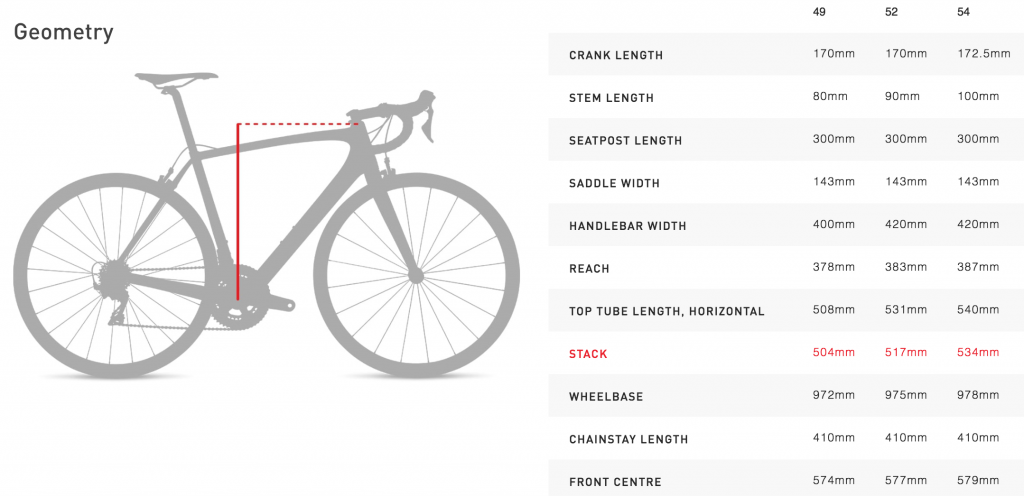
5/ Lastly, the SL6 has become more like the Venge, with a lot of talk about aero tubing and aero gains. Additionally, Specialized compare the Tarmac SL6 to the original Venge’s, as the new Tarmac is now more aero than the original Venge’s that rolled off the production line. And the all-new Venge now looks a lot more like the Tarmac, with a lot of talk about weight savings and all-round performance.
There’s plenty of opportunity to be confused!
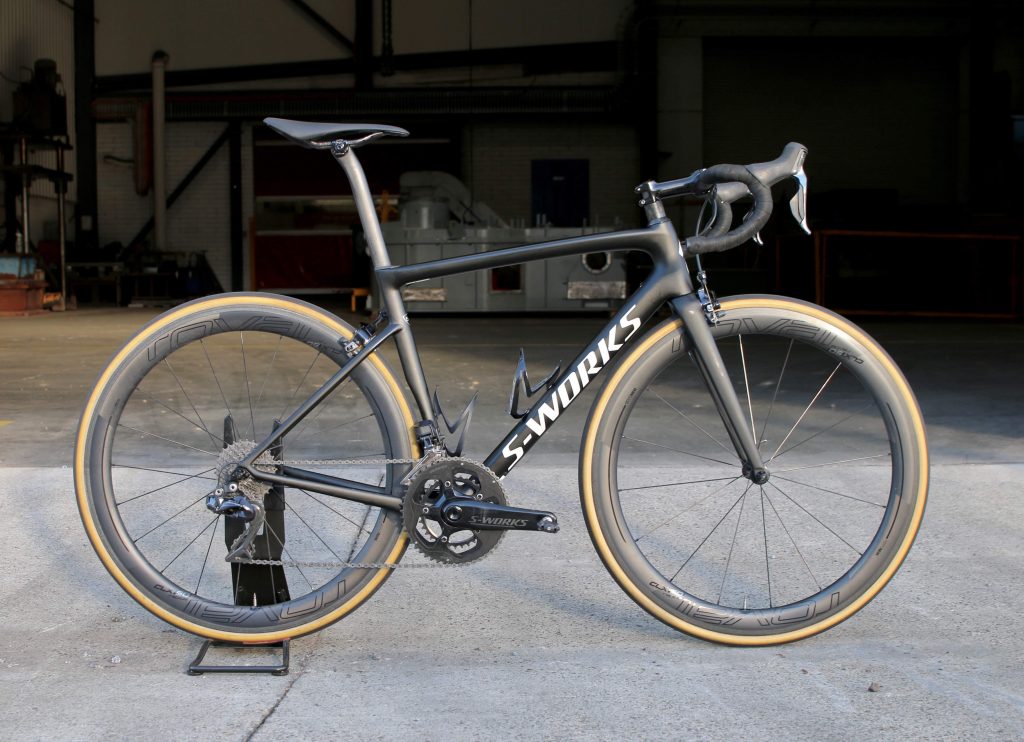
So, let’s break this potential confusion up into five parts so we can delineate between these two machines. Speed & Handling, Weight, Aesthetics ,Comfort, and Combability.
Venge VS Tarmac Speed and Handling
It’s fair to say that Specialized went too far on the VIAS with Aero is Everything.
Within a day of its launch they soon realised it was too heavy and too complex, especially in the cockpit area.
In fact, Mark Cavendish – who was riding Specialized at the time and is well known for being finicky – was in the ear of Specialized Engineer’s within moments of receiving his new ‘superbike’.
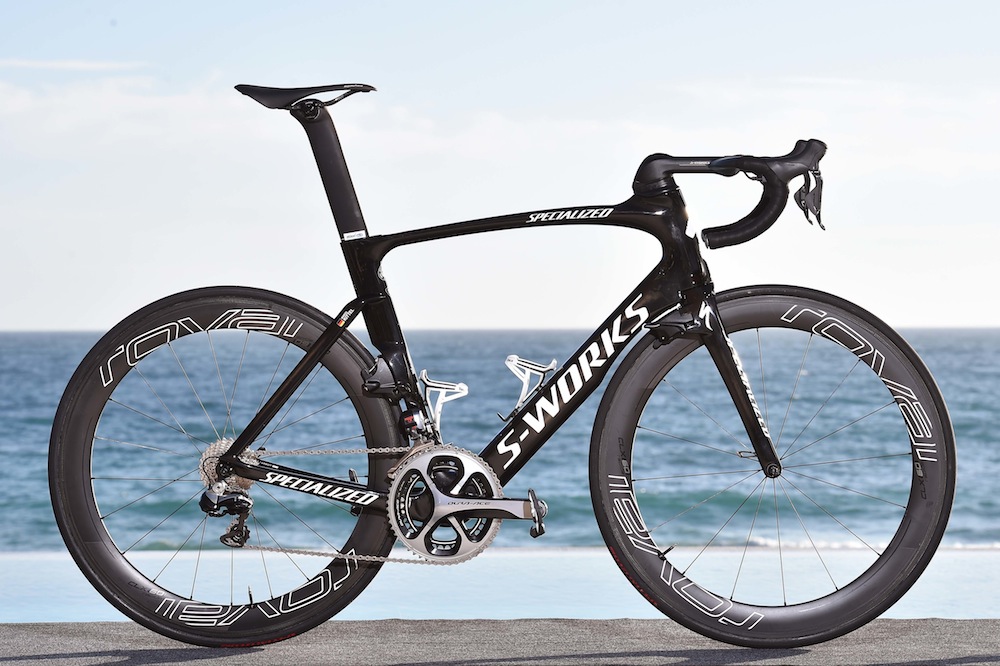
Having said all that, Specialized did create a superfast aerodynamic machine, setting the benchmark for high speed, ultimately meaning they had to at least match it this time round while improving weight and ease of use.
Through the use of a very cleverly built software algorithm by one of the Specialized engineers, Ingmar Jungnickel– which essentially changed the way Specialized approached building the Venge, making aerospace technology more aligned to a bicycle than space shuttles – the Specialized engineering team created what they call “Free Foil Library Tube Shapes “.
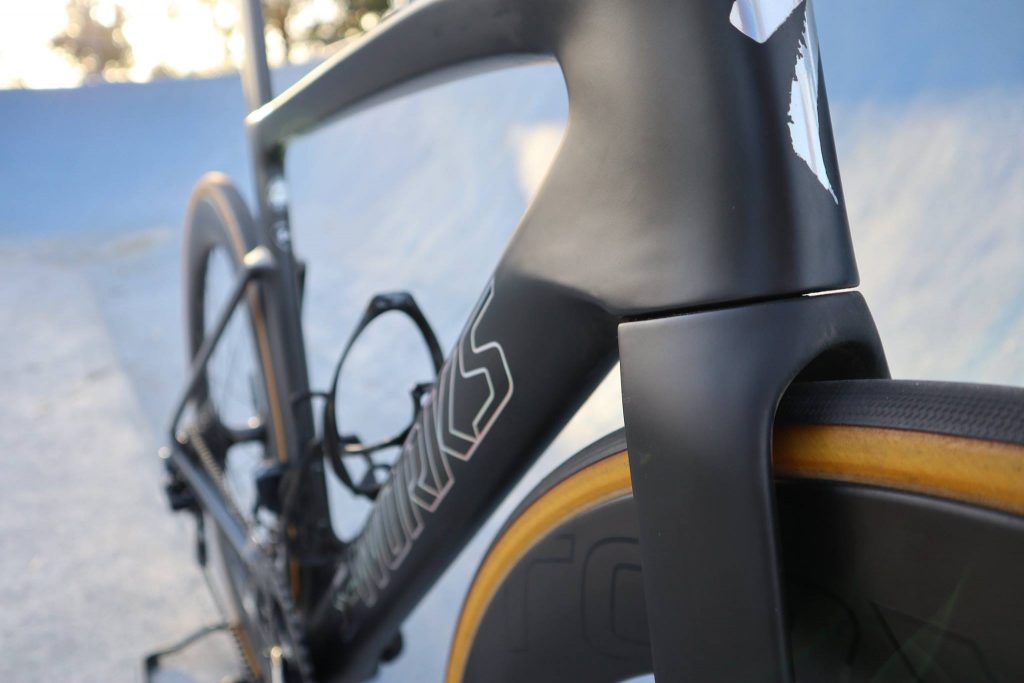
These aero tube shapes were able to be more rapidly tested and trialled thanks to the algorithm and a supposed Specialized ‘super computer’.
The end result enabled Specialized to create super aero tubing, improving the speed of the new Venge over the VIAS by 8 seconds over 40 km.
We’ll get to the complexity and comfort part shortly.
Conversely the Tarmac – which re-engineered their entire frame from the SL5 to the SL6, using narrower tubing and a stronger more compliant carbon fibre, FACT 12r – is now 45 seconds faster over 40 km compared to other lightweight bikes in the same category.
So, they’re both really fast! In fact, the fastest bikes I’ve ever ridden.
However, it’s their designs that give them unique handling characteristics. Here’s some of the key aspects I personally noted:
- You’ll notice the Venge in a tail wind bike time! You get a sailing feeling that makes you go WOW. You certainly get a lift with the Tarmac in a tail wind, especially with the Roval 50s on, but it’s not as significant.
- I felt with the Venge, at around the 35 km mark (when there was no wind or a slight tail) you’d feel the bike step up a notch like you’re getting a push from behind. This is not something I noticed on the Tarmac.
- They’re both incredibly fast on the descent. Although I found that the Roval 64’s on the Venge get nudged around a little more than I’d like. I felt nervous at times, especially hitting 70 km per hour plus on one particular descent. I didn’t get that with the Tarmac.
- Unassisted rolling i.e. not pedalling, the Venge notably maintains speed. I noticed this especially when on a slight descent. I rolled next to a mate who was on a Tarmac SL5. At times he’d be pedalling slightly and I would still be rolling past him without any pressure on the cranks what so ever.
- Climbing in the saddle and out the Tarmac feels more punchy and nimble, as you would expect. It’s 450 grams lighter!
- I felt more confident cornering on the Venge, it tends to hold the line better. The Tarmac is so light and a little twitchy, which meant I overcooked a few corners when riding that bike.
- Sprinting out of the saddle on the flats, the Venge felt more stable and obedient, although the rapid kick and acceleration you can get from the Tarmac at lower speeds will take the Venge out any day.
- On stiffness, they’re both so stiff I found it hard to make comparisons here.
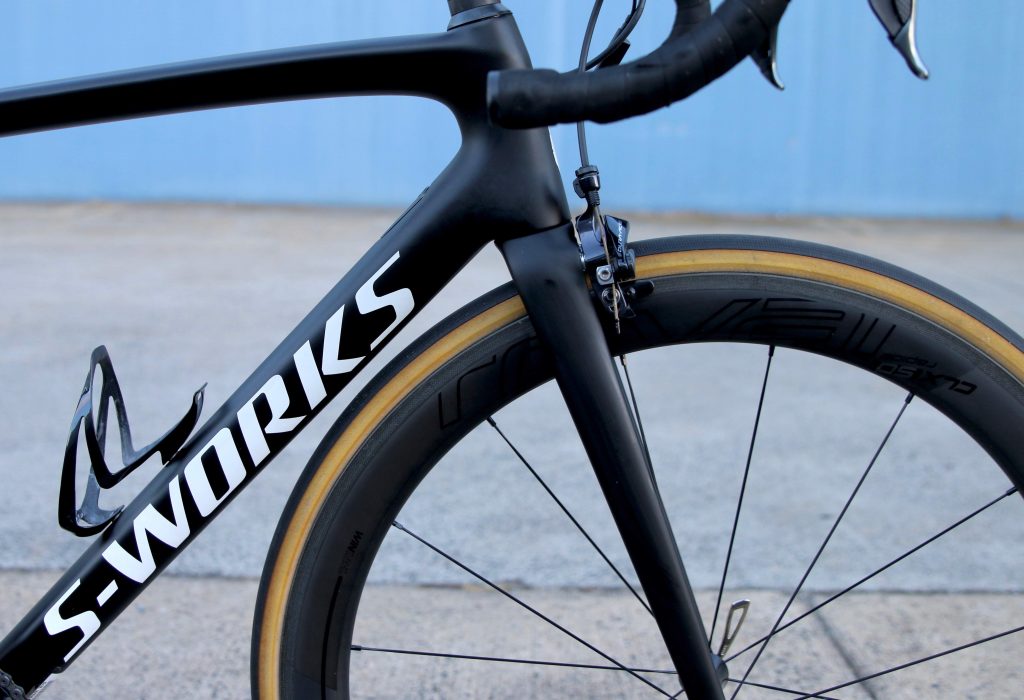
Venge VS Tarmac Weight
I weighed the 54 cm Venge that I was riding down at a Specialized dealer Hampton Cycles and it was 7.47 kgs, complete bike. That’s pedals (Speedplay), rear slight, two X bottle cages and the front computer mount.
Interestingly, while I was at Hampton Cycles there was a Tarmac SL5 with Roval 32’s and SRAM ETAP DISC sitting around. So we weighed that too, which was 7.38 kg, complete bike.
It’s incredible to think the all-new Venge is almost the same weight as the older Specialized Tarmac S-Works, yet it had much bigger Roval 64 wheels. on
Stock 56 cm bikes without pedals, cages etc:
- S-Works Vengecomes in at 7.1kg with deep, 64mm Roval carbon wheels.
- S-Works Tarmac SL6comes in at 6.65kg with mid size 50 mm Roval carbon wheels
A weight saving of 450 grams, which on a bike is reasonable but not massive. The older Venge VIAS would have been closer to 750 grams in difference, which is starting to be significant.
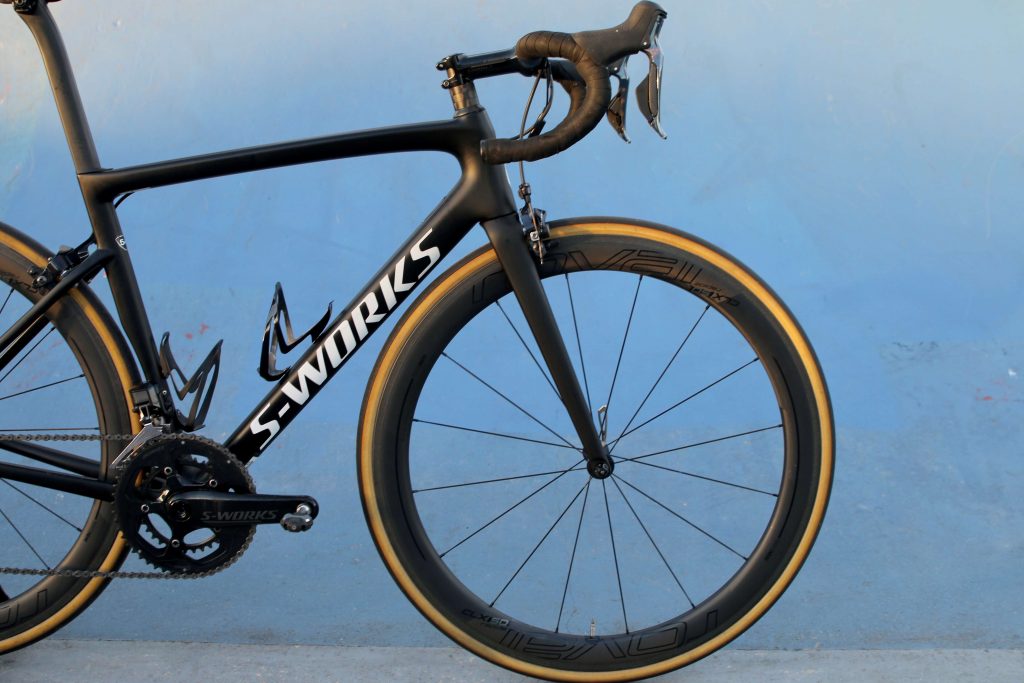
Venge VS Tarmac Aesthetics
In my opinion they are both very attractive looking bikes, however…
Never in my 10-year road cycling history have I had so many positive comments on the lookof a bike with the all-new Specialized Venge.
Even my wife – who’s witnessed me bring home many many road bikes over the journey – said to me: “that’s the best looking road bike I’ve ever seen to bring home”.
WATCH THE VIDEO of my first impressions:
To go into the details here I have to start with the cockpit area because it really is quite magnificent.
Specialized Engineer Doug Russell allegedly said he spent months thinking about nothing but cockpit integration and ease of use (you’re now capable of changing handlebar height and stems without having to have an engineering degree!).
Those months of cockpit thinking, in addition to Ingmar’s algorithm, which almost took care of the rest of the Venge – including a seat post which is more aerodynamic, compliant, and moves slightly away from the traditional aero truncated air foil design of the VIAS and other competing area frame – to create a stand-out from the crowd. The Roval 64 wheels are the cherry on top, but I’ve found if you remove the Venge cherryit does take away from the overall appeal. Quite a lot.
On the Tarmac’s aesthetics, I don’t want to take anything away from the SL6. That’s a good-looking road bike, and with a set of Roval 50’s it’s got some grunt.
Although I’ve personally found that because the narrower lightweight design / tubing, particularly with shallower wheels on it, the Tarmac will look a little puny in comparison to the Venge.
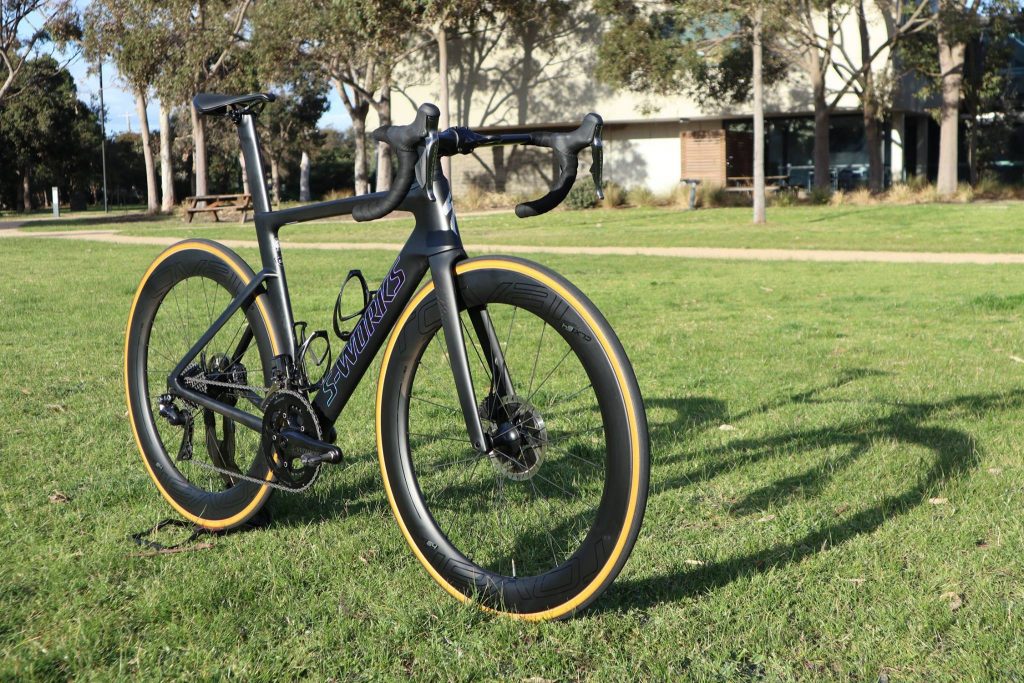
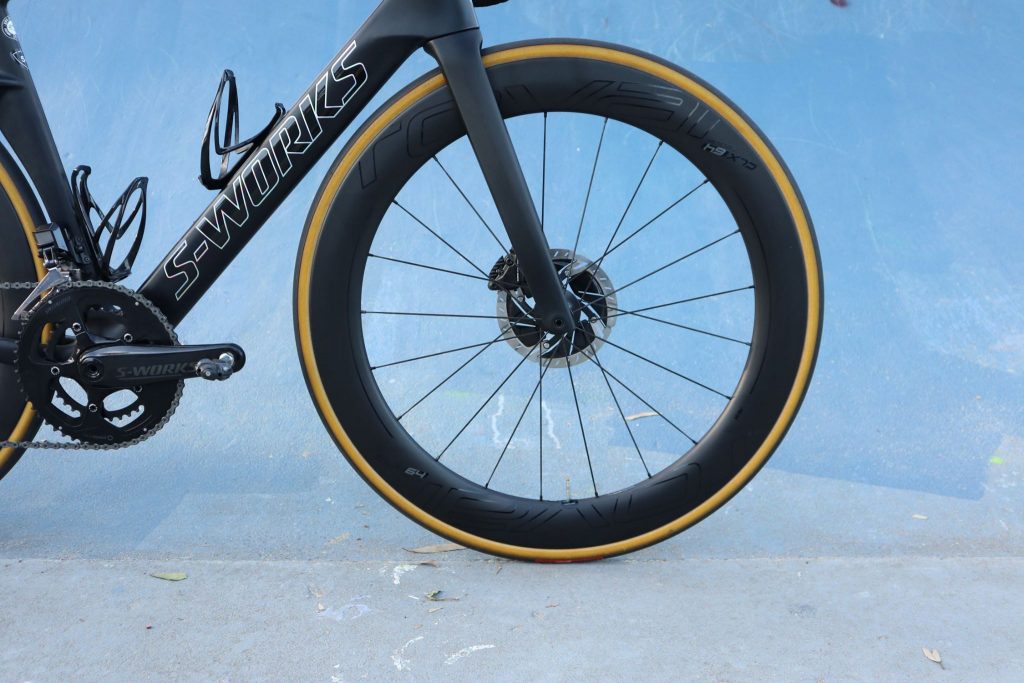
Venge VS Tarmac Comfort.
I owned and rode the original Venge.
That thing was simply uncomfortable. It actually put me off ever again owning an aerodynamic road bike as my one and only machine.
I never rode the VIAS, but by all accounts, the comfort hadn’t improved.
While this all-new Venge is no Specialized Roubaix, taking it on some long 130 km plus base km cruisey rides – going up steep hills and absorbing the brunt of the road – I was surprised by its shock absorbing ability.
The new frame tubing, the rider first engineered approach, a more compliant handlebar system and seat tube has all rallied together to make this bike OK ( a 5 out of 10) for long rides with mate.
Specialized Head Engineer (Chris Yu) describes the comfort improvement from the Venge being more “structurally efficient”. Meaning less material, and as a result of less material, you mitigate road vibrations and buzz through the frame.
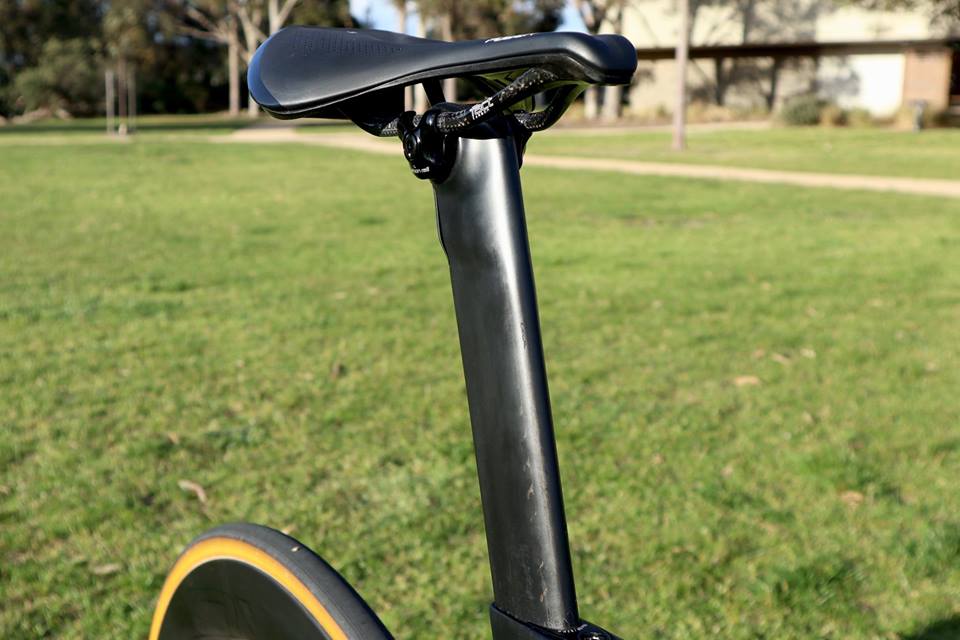
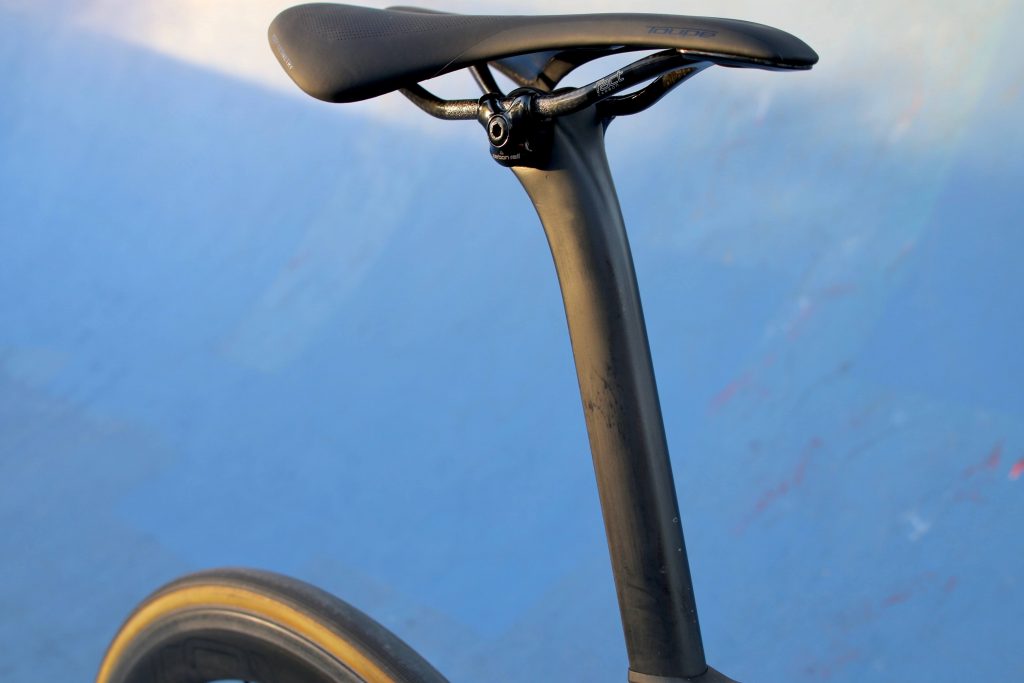
Having said that, for longer rides, I’d take the Tarmac any day of the week.
It’s got a slightly more relaxed geometry for one, the carbon fibre mould is a higher quality than the Venge (FACT 12r), and the seat post employsa non-standardised layup that enables more compliance at the top end of the post, towards the seat, so you get less pressure the in rear, notably your lower back.
Regarding the FACT 12r on the Tarmac versus the FACT 11r on the Venge, this is what I got back from Specialized directly:
Essentially the Tarmac frame structure was designed first and foremost for lightweight and stiffness. Because of this, the 12r material was used to amplify that design. The Venge frame had a structure that was focused first on aerodynamics. Using the more premium material wouldn’t have provided a tangible weight or stiffness benefit on that frame.
Originally I thought it might be a cost savings thing here, as the Venge has more frame material. Thus, if you built that bike with the Specialized FACT 12r on the Venge, you might be up for a $20,000 bike. Not practical. The jury is still out if my assumptions are incorrect here!
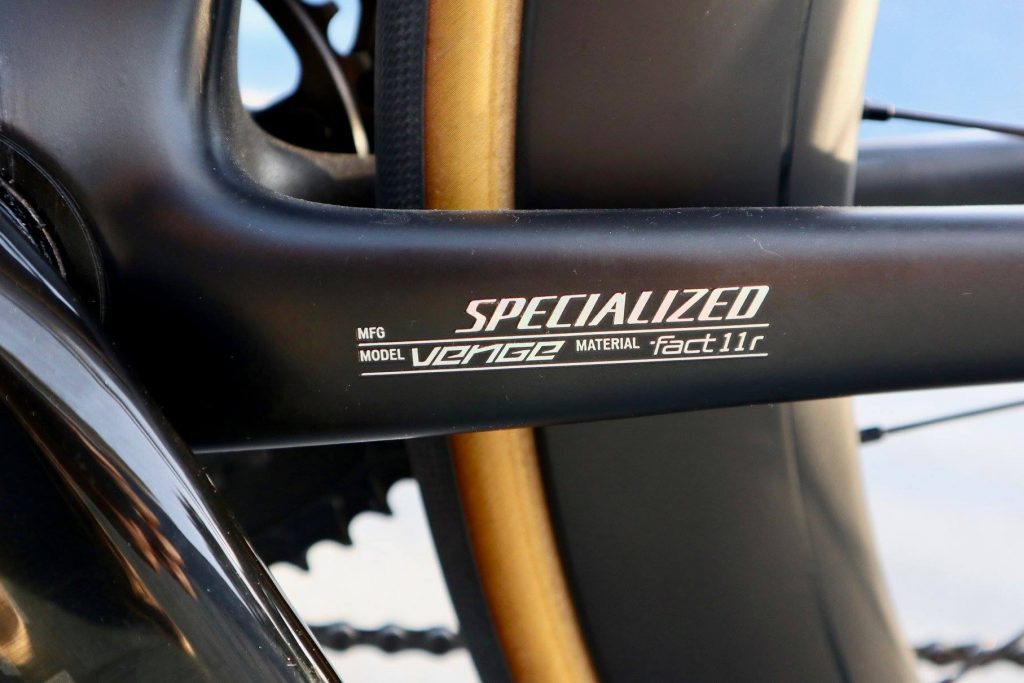
Venge VS Tarmac Compatibility
The Venge comes in at a whopping $14,500 AUD.
It’s only disc, electronic group set compliable, and really looks ace with 64 depth rims. It starts losing its jaw dropping appeal with any wheel that has a lower profile, in my opinion.
Specialized have partnered with Bar Fly for the integrated bike computer mount.
Interesting to note that the junction box for the Di2 on the Venge sits in the seat post, which has been put their so pro teams can hang out a car and tinker more easily.
Lastly, you can get a set of 32 mm tyres into the Venge, but only 30 mm on the Tarmac. The wider tyre width with lower pressure will help improve the comfort on the Venge for those looking to take it out on longer rides.
The Tarmac S-Works SL6 comes in at $13,500 AUD, but it’s more flexible with componentry.
You can get a rim brake version or mechanical, and its ability to aesthetically work with other wheels makes it’ a better proposition if you’re going to be riding with training wheels, or lower profile race rims.
Fitting bits and pieces to the handlebar, including lights and computer mounts is more practical on the Tarmac too.
Both bikes have Specialized branded power metres.
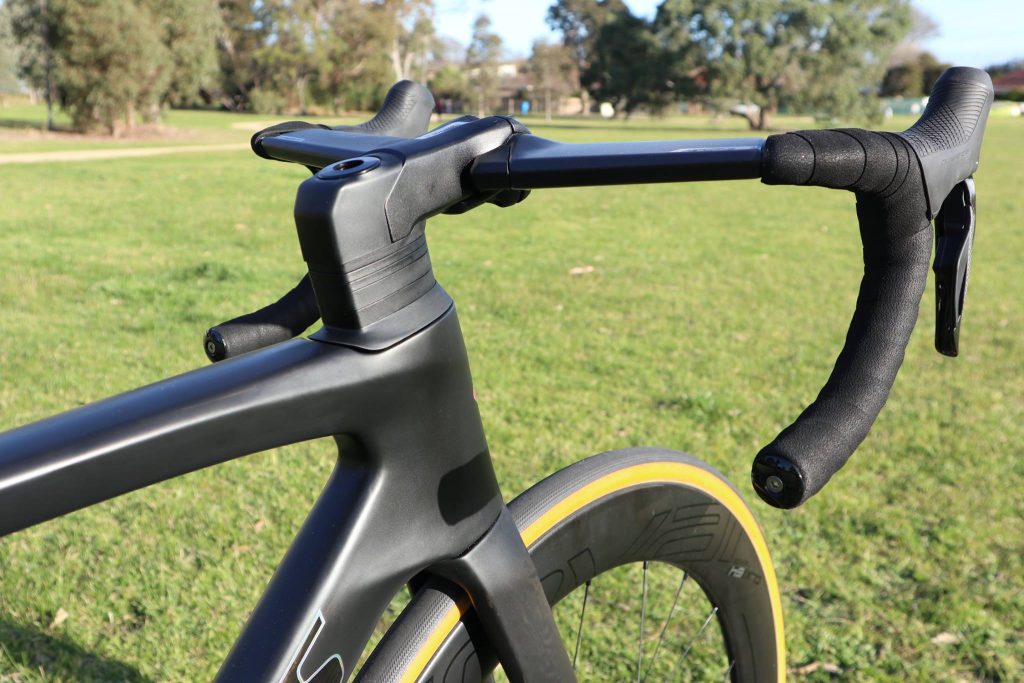
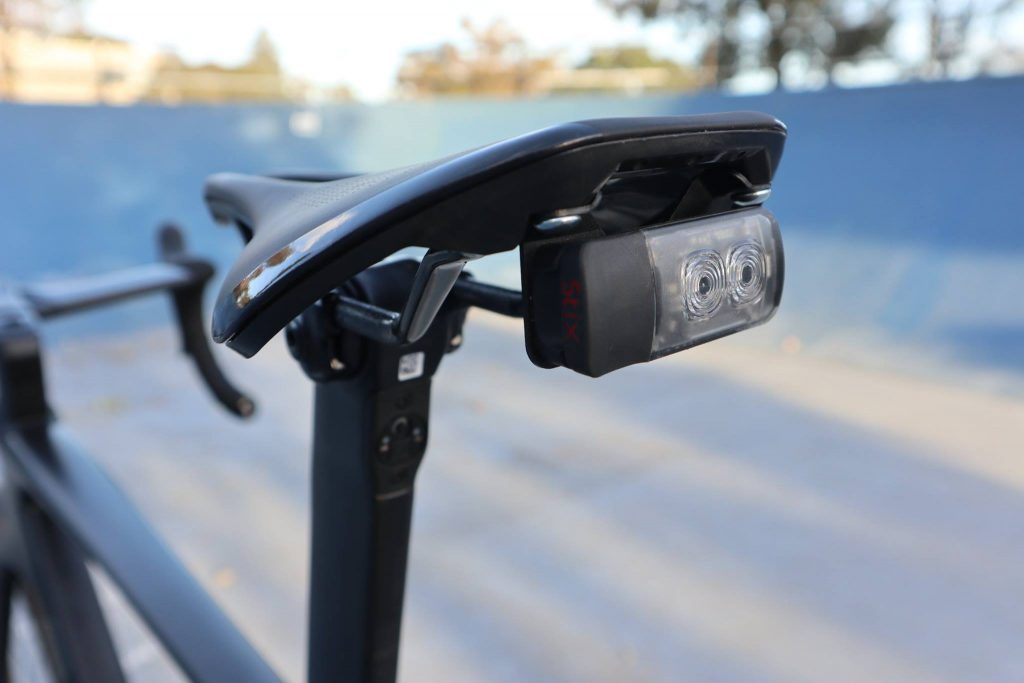
Venge VS Tarmac Conclusion.
Despite these two bikes becoming more similar to each other, they still offer vastly different riding characteristics.
I’d say, if you’re into your fast bunch riding or criterium racing, you live in a flatter part of the world, and you want a real head-turner, then the Venge is your go-yo machine.
While I say that, I am personally a criterium racer, I love a fast bunch ride, and I also seek a head turner every time I create a priority list for my next bike purchase. But if I had to choose between the Venge and the Tarmac, I’d go the Tarmac.
Reason being, I rate the comfort factor higher on the priority list than I once did.
I ride long distances for training (100-150 km rides) and something that is more forgiving is important to me. Additionally, I enjoy hill climbing, so the extra weight savings and the more relaxed geometry makes the Tarmac a better proposition. Lastly, the versatility of swapping wheels out for training and different races is something to consider. You can do that with the Venge, but you destroy one of its leading characteristics, aesthetics!
Ultimately, though, if I could have a fast aero beastand an all-round training and race bike, then I’d take them both. Specialized have really impressed me with both bikes, straight from the heart!





Thanks Cameron for the review.
I am only just starting to research options for road bikes and your review was very clear and to the point – easy for a novice to understand.
Amazing review!
I am now buying for my new bike and wanted to know what’s the fastest speed you rode the tarmac on flat surface?
I bought the tarmac SL6 but I want to put the Venge stem and the Aerofly II handlebars on it. Are they compatible?
Great review and very informative. I’m looking at both the 2019 S-Works Venge and Tarmac in the SRAM Red AXS disc versions. Price has dropped significantly in online sale here recently in the UK where they are closer to my original ‘Pro’ spec option. Better wheel sets and power meter included make for very attractive package right now.
I love the look of the Venge (and aero bikes in general having had a couple of Felt AR bikes previously) but my head / fitness says go Tarmac. I’m no racer and will more likely be using it on longish sportives so all day comfort is my main criteria. Tough choice though…wish I could afford both!